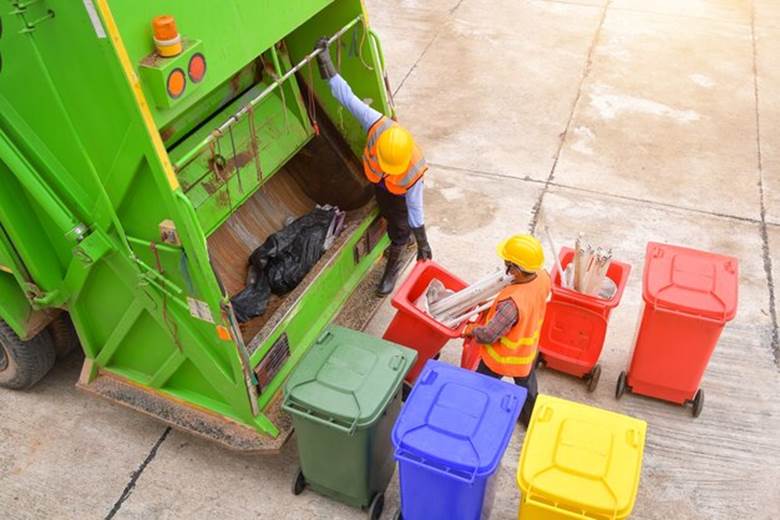Waste management is the process of collecting, transporting, disposing of, recycling, and monitoring waste materials from sources such as households, construction sites, industry, and community activities. When done well, it protects public health, preserves environmental quality, and supports long-term sustainability.
Why a high-quality bin lifter matters
Investing in a high-quality bin lifter streamlines waste handling and improves safety. By mechanising the lifting and tipping of heavy bins, it reduces manual handling, speeds up workflows, and helps maintain cleaner, more hygienic waste areas. A reliable bin lifter also supports compliance with workplace safety guidance and environmental best practices.
Understanding a High-Quality Bin Lifter
What a bin lifter is and how it works
A bin lifter is a mechanical assist device designed to lift, secure, and tip waste bins into larger containers or collection vehicles. Depending on the model, it may use hydraulics, electromechanical drives, or manual winch systems. The mechanism grips the bin, raises it to a set height, and rotates it to empty contents in a controlled motion, reducing spills and strain on operators. For a primer on how hydraulic systems work, see Encyclopaedia Britannica’s guide to hydraulics.
Common types of bin lifters and their uses
Different environments call for different lifter designs:
- Mobile bin lifters: Wheeled, self-contained units that can be moved between loading points. Ideal for sites with multiple waste stations or confined spaces.
- Stationary lifters: Fixed in place and often integrated with compactors, skips, or hoppers. Best for high-volume, single-location tipping.
- Customisable or integrated lifters: Tailored to specific bin sizes, lift heights, waste streams, or equipment (e.g., compactor inlets), and may include enclosures or chutes for odour and spill control.
- Vehicle- or plant-mounted lifters: Fitted to trucks, forklifts, or loaders to streamline collection and transfer.
Why quality matters in waste management
High-quality lifters deliver consistent performance, reduce the risk of musculoskeletal injuries, and support compliance with safe work practices. They also minimise spillage and cross-contamination, helping keep facilities cleaner and more efficient. For guidance on reducing manual handling risks, see Safe Work Australia’s hazardous manual tasks.
How a High-Quality Bin Lifter Improves Waste Management
Greater efficiency and convenience
Mechanised lifting cuts handling time, provides consistent tip angles, and reduces bottlenecks at busy waste points. Teams can move more material with fewer people and less fatigue, and integrated controls help coordinate with compactors or hoppers for a smoother, cleaner workflow.
Health and safety benefits
By removing the need to manually lift and tip heavy bins, lifters reduce the risk of back strains and other injuries. Features such as hold-to-run controls, interlocks, emergency stops, and guarded pinch points further protect operators. For general plant and machinery safety advice, refer to Safe Work Australia: Plant.
Lower environmental impact
Controlled, consistent tipping helps prevent spills and litter, reducing contamination of surrounding areas and stormwater systems. Better handling also supports higher-quality sorting and recycling, which aligns with national waste reduction goals. Learn more about waste policy and resource recovery at the Australian Government’s waste and recycling hub and the Ellen MacArthur Foundation’s circular economy overview.

Features of a High-Quality Bin Lifter
Durability and robustness
Look for heavy-duty frames (e.g., powder-coated or galvanised steel; stainless steel for corrosive or washdown areas), industrial-grade actuators, and weather-resistant electrical components. High ingress protection (IP) ratings and protected cabling extend service life, especially outdoors or in food and beverage environments.
Suitable weight capacity
The lifter’s rated capacity should comfortably exceed the heaviest full bin you expect to handle, including dense or wet waste that adds significant mass. Consider dynamic loads from liquid slosh and ensure compatibility with your bin sizes and standards used on site.
Easy maneuverability
For mobile units, large-diameter wheels, quality castors with foot brakes, balanced weight distribution, and ergonomic handles improve control on ramps and tight turns. A compact footprint helps in corridors and plant rooms without sacrificing stability.
Safety features
Essential features include secure bin clamps, interlocked guards, emergency stop buttons, hold-to-run controls, overload protection (e.g., relief valves or current limiting), clear signage, and audible/visual alerts. Choosing equipment designed to meet relevant machinery safety requirements and providing operator training further reduce risk.
Purchasing a High-Quality Bin Lifter
Key factors to consider
Evaluate load capacity, compatible bin sizes, required lift height, cycle frequency (duty cycle), and power options (manual, battery, or mains). Check safety features, footprint and turning radius, environmental conditions (indoor/outdoor, washdown, corrosive exposure), and noise levels. Review build quality, IP ratings, spare parts availability, service support, and warranty terms.
Choosing the right model for your needs
Start with a waste audit: identify bin sizes, waste types, fill patterns, and collection points. Map space constraints and floor gradients. Shortlist models that match your throughput and safety requirements, then request demonstrations or trials in your environment. Consult suppliers on custom guards, chutes, or integrations with compactors to optimise performance.
Cost-effectiveness and value for money
Assess total cost of ownership, not just purchase price. Factor in maintenance intervals, energy use, operator time saved, reduced spillage cleanup, and fewer manual handling injuries. Reducing injury risk can deliver significant long-term savings; see Safe Work Australia’s research on the cost of work-related injury. The right lifter provides reliable performance, safer operations, and a clear return on investment.
